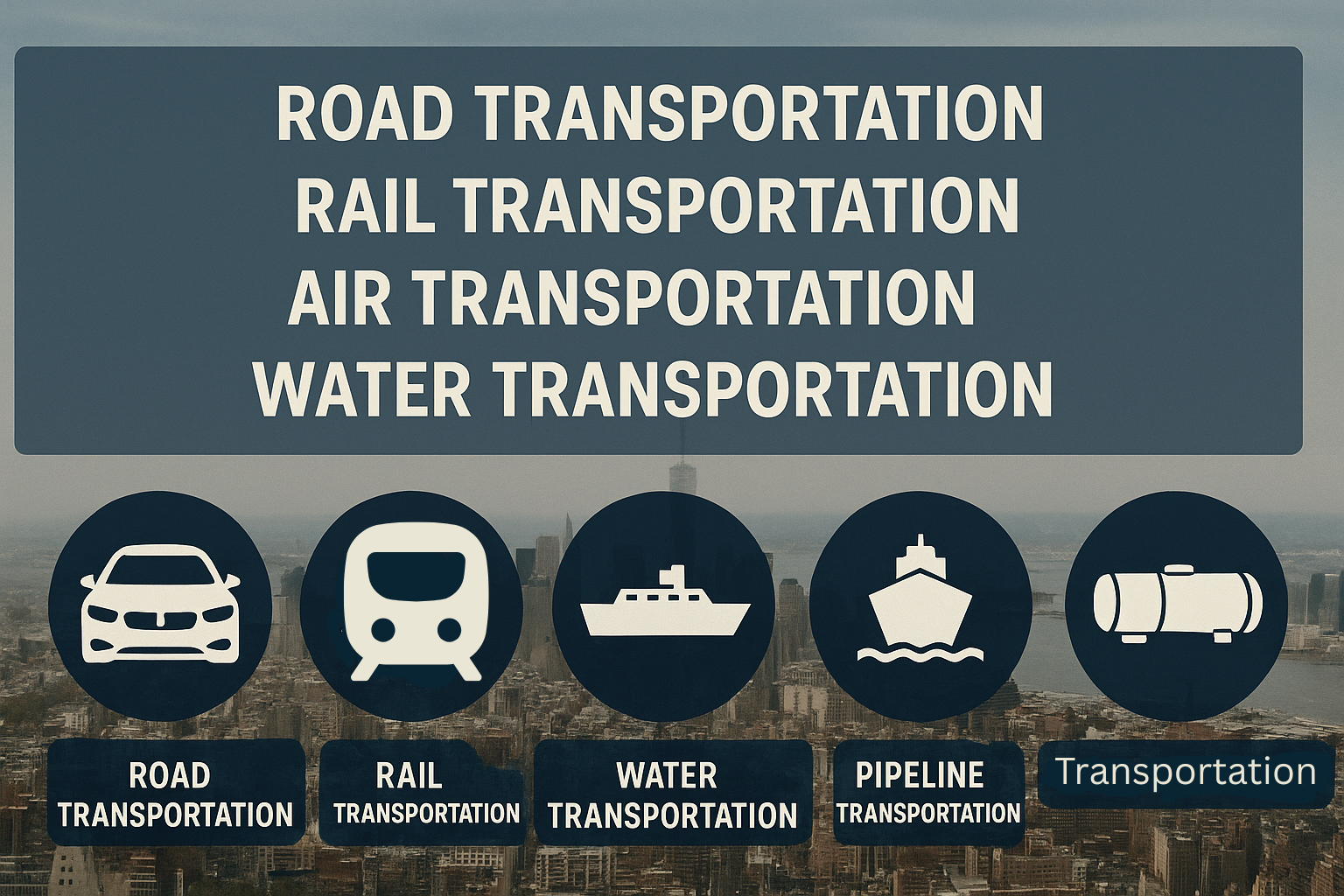
What are the Five Most Common Modes of Transportation in NYC
New York City (NYC), with its bustling streets and diverse population, relies on various transportation options to keep things moving. Whether you’re traveling across the city or moving freight through the logistics network, understanding the most common modes of transportation is crucial. Here, we’ll dive into the five most common modes of luxury transportation in NYC, exploring both passenger and freight transportation options.
1. Road Transportation
Road transportation is perhaps the most commonly used form of transport in NYC. With its extensive network of streets and highways, it provides a reliable way to move both people and goods across the city. Cars, taxis, buses, and trucks are the primary vehicles on the road, making road transport essential for daily commutes and logistics.
For passenger transportation, road transport includes taxis and private cars, especially when you use a service like Luxury Limo NYC for a comfortable and luxurious ride. This mode of transportation is ideal for short to medium distances within the city. For moving goods, trucks and delivery vans are often used to transport cargo, with road transportation being the backbone of the logistics and supply chain management in NYC.
2. Rail Transportation
Rail transportation is another common mode in NYC, especially for long-distance travel and the transport of large quantities of goods. The MTA subway system serves as the city’s primary mode of public transport, making it one of the most efficient ways to travel across the five boroughs. Commuters rely on the subway for its speed and coverage, providing access to almost every corner of the city.
In addition to passenger transport, railways are also widely used for freight transportation. Rail transport offers a cost-effective solution for moving goods in large quantities, particularly for long-distance travel. The rail system in NYC connects to national freight lines, allowing for efficient cargo movement within the supply chain.
3. Air Transportation
Although not as common for daily travel within the city, air transportation plays a critical role in long-distance travel and freight transport. Air travel from NYC is facilitated by major airports like JFK and LaGuardia. These airports connect NYC to destinations worldwide, making air transportation the fastest way to travel over long distances.
Air freight, or the transportation of goods by air, is also a significant part of the city’s logistics network. Companies use air transport to move products quickly, especially for time-sensitive shipments. This mode of transport is essential for international trade, with cargo ships also playing a complementary role in maritime transportation to and from NYC’s ports.
4. Water Transportation
Water transportation, while not as prominent for passengers, is vital for the movement of goods in NYC. The city’s strategic location along the Hudson River and the Atlantic Ocean makes water transport ideal for freight shipments. Cargo ships and tankers transport large volumes of goods, including raw materials and consumer products, to and from NYC’s bustling ports.
Water transport is particularly beneficial for international trade, offering a more cost-effective method of moving freight compared to air or rail transportation. The New York Harbor handles a significant portion of the nation’s import and export activities, making it an essential part of the transportation system.
5. Pipeline Transportation
While not a mode most people think of often, pipeline transportation is crucial for moving liquids and gases. NYC relies on pipelines to transport essential resources like natural gas, heating oil, and other liquids. Pipeline transport provides an efficient and safe way to move these commodities across the city, ensuring consistent energy supply for businesses and homes.
This form of transportation is particularly important in the supply chain for industries that rely on natural gas and other liquids for energy production. Pipeline transportation can efficiently transport large volumes over long distances, making it a valuable asset for both residential and industrial use.
Conclusion
New York City’s transportation system relies on various modes to cater to the needs of its residents and businesses. From road and rail to air, water, and pipelines, each mode of transport plays a vital role in keeping the city running smoothly. Whether you’re looking to travel around the city or need to transport goods, understanding the most common types of transportation can help you choose the right option for your needs.
